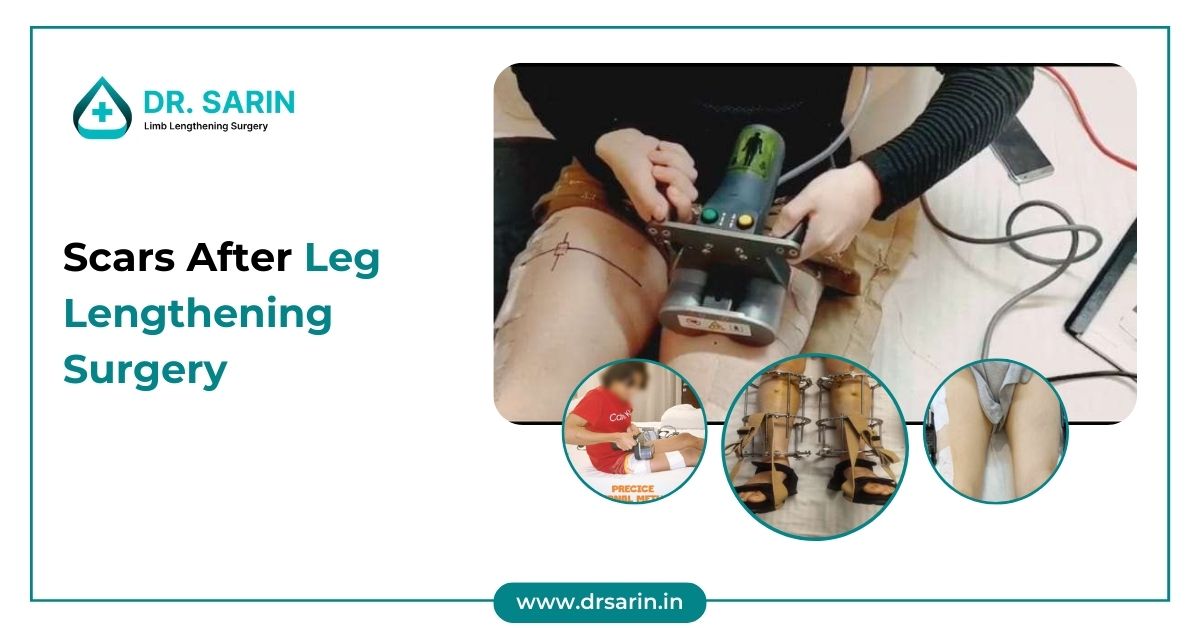Leg lengthening surgery is a remarkable medical procedure that offers the potential for increased height or correction of limb deformities. While the surgery holds promising results, it often raises concerns about scarring. Scars are an inevitable part of the healing process after any surgical intervention, including leg lengthening procedures. Understanding the types of scars, their treatments, and their differences is crucial for individuals considering or recovering from leg lengthening surgery.
Types of Scars After Leg Lengthening Surgery
- Linear Scars: Most leg lengthening surgeries involve incisions along the bone’s length. Linear scars are a common outcome of these procedures. They typically appear as straight lines along the incision sites and might vary in length and visibility based on individual healing factors.
- Keloid Scars: In some cases, especially in individuals with a genetic predisposition, keloid scars can form. These scars extend beyond the original incision area, resulting in raised, thickened, and sometimes itchy patches of skin. While uncommon, they might require specialized treatments for management.
- Hypertrophic Scars: Like keloid scars not extending beyond the wound area, hypertrophic scars are raised and may be reddish or darker than the surrounding skin. These scars usually regress over time but might benefit from specific treatments to minimize their appearance.
Treatments for Scars After Leg Lengthening Surgery
- Silicone Gel or Sheets: Widely used for scar management, silicone gel or sheets are non-invasive options that can help flatten and reduce the redness of scars. Applying them regularly over the affected area can aid in improving the appearance of scars.
- Steroid Injections: For hypertrophic or keloid scars, steroid injections might be recommended by a healthcare professional. These injections can help flatten and soften the scar tissue, reducing its visibility.
- Laser Therapy: Laser treatments, such as fractional laser therapy, can effectively minimize the appearance of scars by targeting the scar tissue and promoting skin regeneration. Multiple sessions might be required for optimal results.
- Surgical Revision: Surgical revision may be considered in some cases, particularly with highly visible or problematic scars. This involves excising the scar tissue and re-closing the incision to create a less noticeable scar.
Differences in Scars and Their Impact
The type and visibility of scars post-leg lengthening surgery can differ significantly among individuals. Genetics, skin type, and adherence to scar care routines are pivotal in scar formation and visibility.
Moreover, the impact of scars extends beyond their physical appearance. Scars can affect one’s self-esteem and body image, especially in apparent areas. Addressing concerns about scarring before undergoing leg lengthening surgery is crucial to managing expectations and developing a comprehensive post-operative care plan.
Post-Operative Scar Care Tips
- Follow Medical Advice: Adhering to the instructions provided by your healthcare professional regarding wound care and scar management is crucial for optimal healing.
- Keep the Area Clean: Proper hygiene helps prevent infections and facilitates healing. Follow recommended cleaning routines for the surgical site.
- Use Scar Management Products: Incorporate recommended scar management products like silicone gel or sheets into your daily routine as directed by your healthcare provider.
- Stay Patient and Consistent: Scar healing is a gradual process. Consistency in scar care routines and patience are crucial to achieving better outcomes.
Conclusion
Scarring after leg lengthening surgery is an inherent part of the healing process. Understanding the types of scars, available treatments, and their potential impact is vital for individuals considering or recovering from this procedure. While scars may be inevitable, proactive scar care and adherence to medical advice can significantly reduce their visibility and improve the overall healing process, ultimately contributing to a more satisfying outcome for the individual.
Also Read:



